-
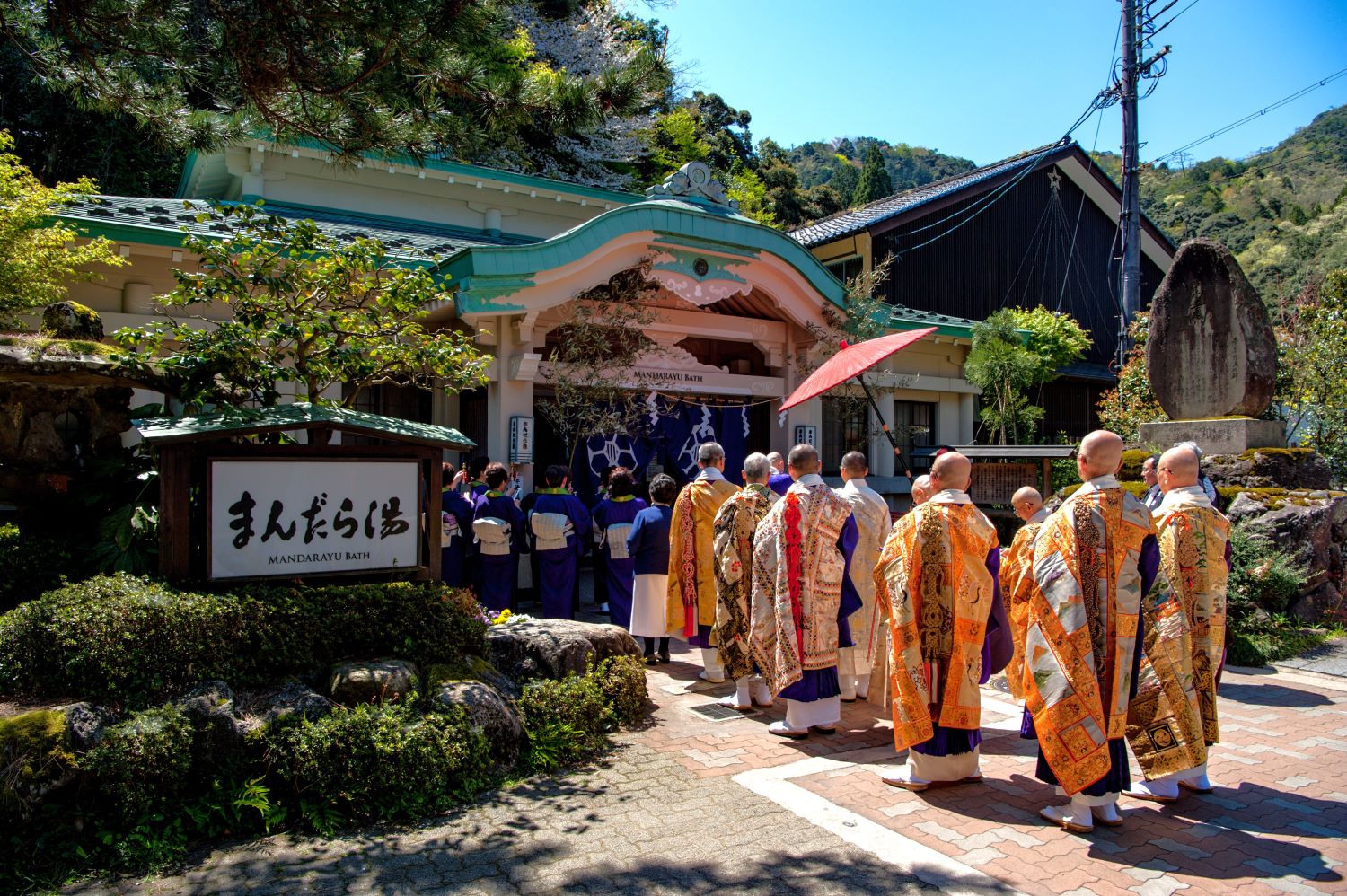
-
The ancient waters of Kinosaki Onsen, which have even been recognized by Japan’s Emperor for their healing abilities and mystical properties, were originally discovered by a Buddhist priest passing through the town of modern-day Kinosaki.
This priest named Dochi Shonin was travelling across Japan, and when he arrived in Kinosaki, he saw that the residents were ill and suffering. Dochi Shonin received an oracle which told him to pray for one-thousand days in order to assist the townspeople in their plights and sufferings.
On the thousandth day of prayer in 720 A.D., water suddenly sprung out from the ground by what is now known as Mandara-Yu, consequently renowned as one of Kinosaki’s very first hot springs (the other being Kono-Yu).
-
The ability to create hot water without the use of fire was viewed as an otherworldly act, and Kinosaki Onsen had gained recognition throughout Japan as a town blessed by the gods. Eventually, news of the burgeoning hot spring town made its way to the Emperor.
After confirming the authenticity of Kinosaki’s hot spring water, he gave the title of “Guardian Temple of Kinosaki Onsen” to Onsenji Temple, the temple erected by Dochi Shonin for the protection of Kinosaki, its waters and its people. -
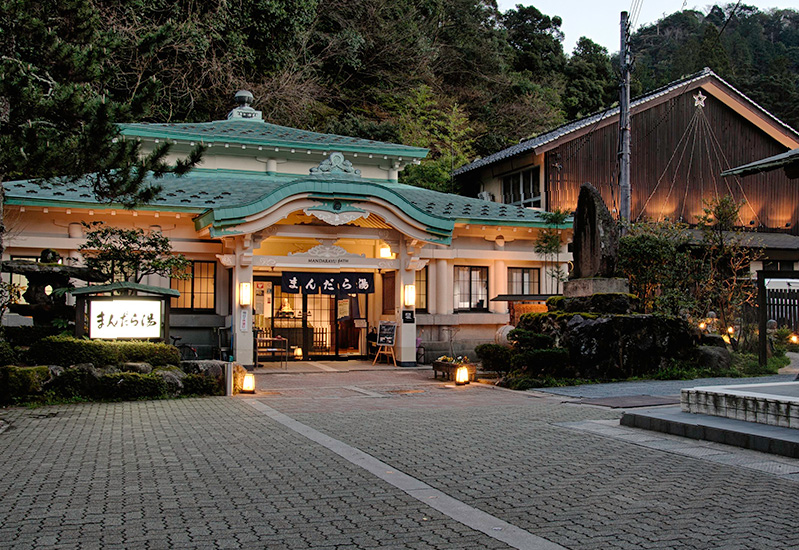
Mandara-Yu
As thanks to Dochi Shonin for founding Kinosaki Onsen, every year during the days of April 23 and April 24, the locals of Kinosaki Onsen celebrate their humble beginnings and commemorate Dochi Shonin’s service.
-
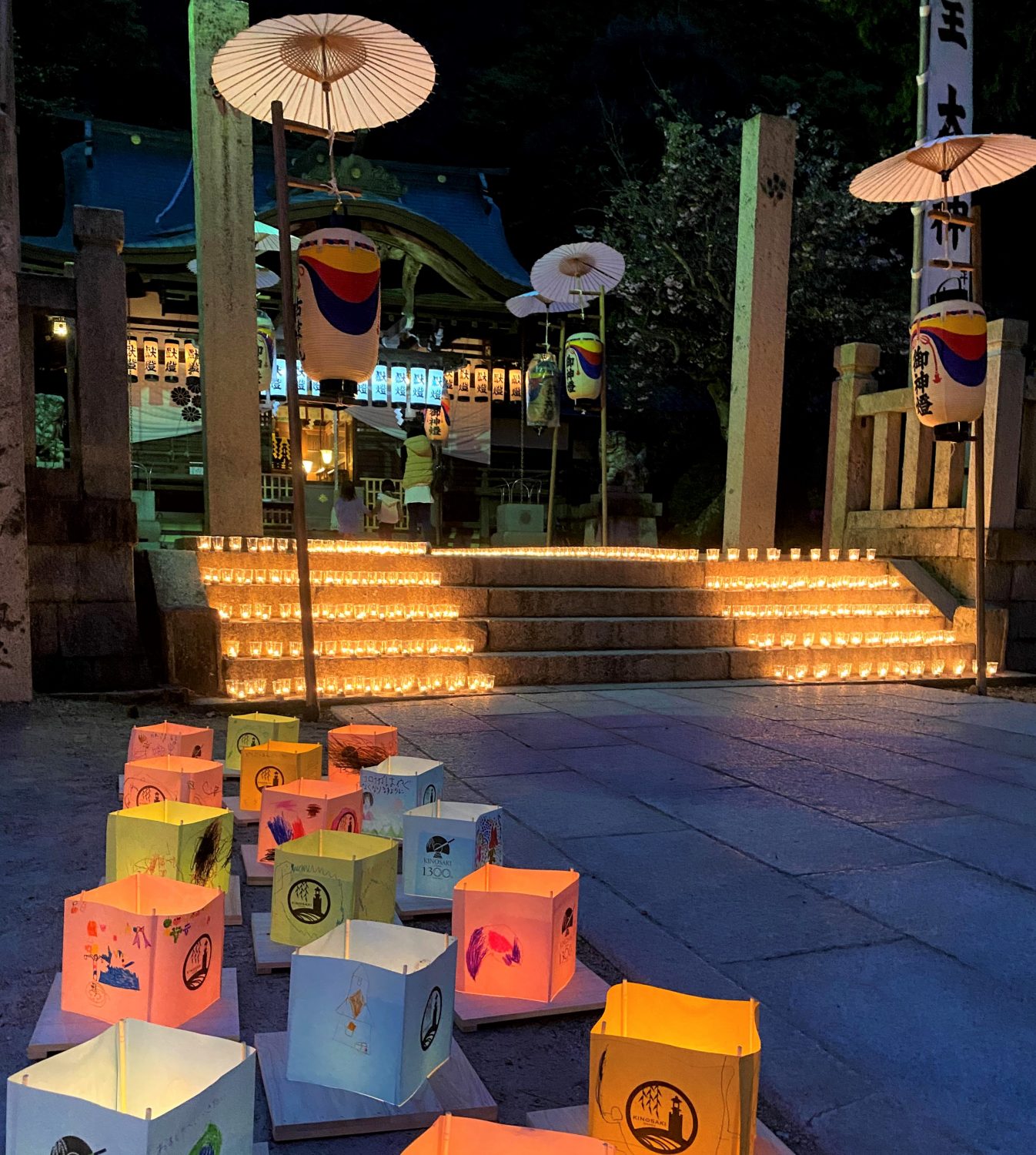
-
The Onsen Festival, beginning on April 23, the recorded date of Dochi Shonin’s death, begins with a reverent procession of Shinto priests paying respects and blessing all seven of Kinosaki Onsen’s public hot springs.
After a day of thanks, locals and visitors light up the town with candles and lanterns. Writing down hopes and prayers on the outside of the lanterns, people decorate the streets with a colorful illumination and pray for the further prosperity of Kinosaki Onsen, its locals, and its visitors.
Many of these lanterns are placed outside of Shisho Shrine, where it is said that Dochi Shonin slept on the night of his vision.
-
According to another legend from 1,300 to 1,400 years ago, the hot spring waters that are now home to Kono-Yu, another one of Kinosaki’s seven public bathhouses, were discovered when an Oriental White Stork was soaking its injured leg in a pool of water.
The stork, appearing to have been healed, eventually took flight, and a natural hot spring was found where the stork had been bathing. This spring is now known as Kono-Yu, “the hot spring of the Oriental White Stork.” -
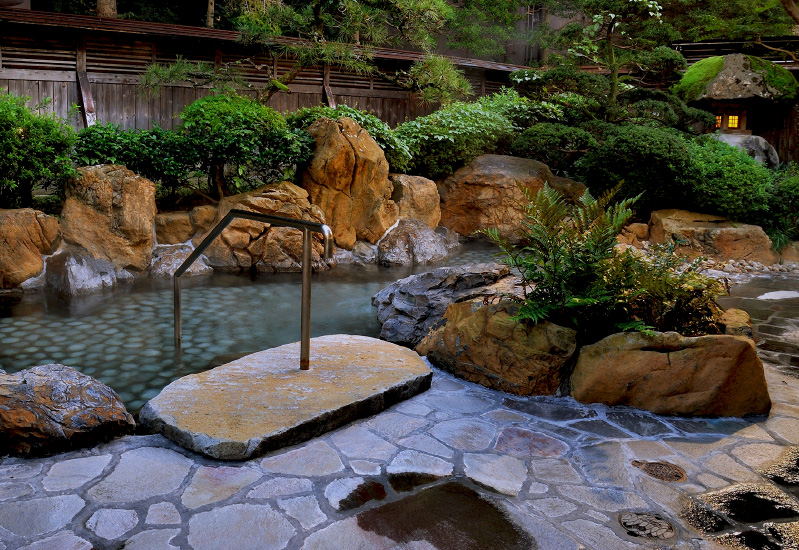
Kono-Yu
-
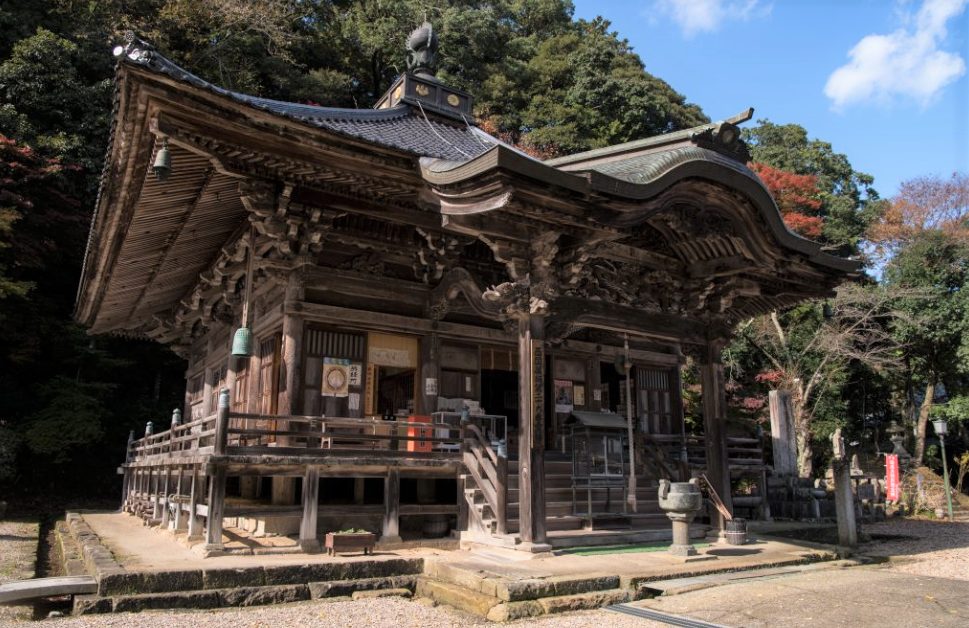
Ever since the creation of Kinosaki Onsen, it has been said by locals that in order to truly enjoy the town’s seven hot springs, one should climb halfway up Mount Daishi and pay respects to Onsenji Temple, the guardian temple of Kinosaki. In fact, when the town was first founded, those who wished to bathe in the waters of Kinosaki Onsen were required to make a trip up to Onsenji Temple beforehand.
Although this tradition is no longer a requirement for entering Kinosaki’s hot springs, it is still highly encouraged to enjoy the hike to this ancient temple, learn about the history from the monks themselves, and even see artifacts such as canes left behind by those healed by Kinosaki’s waters.
